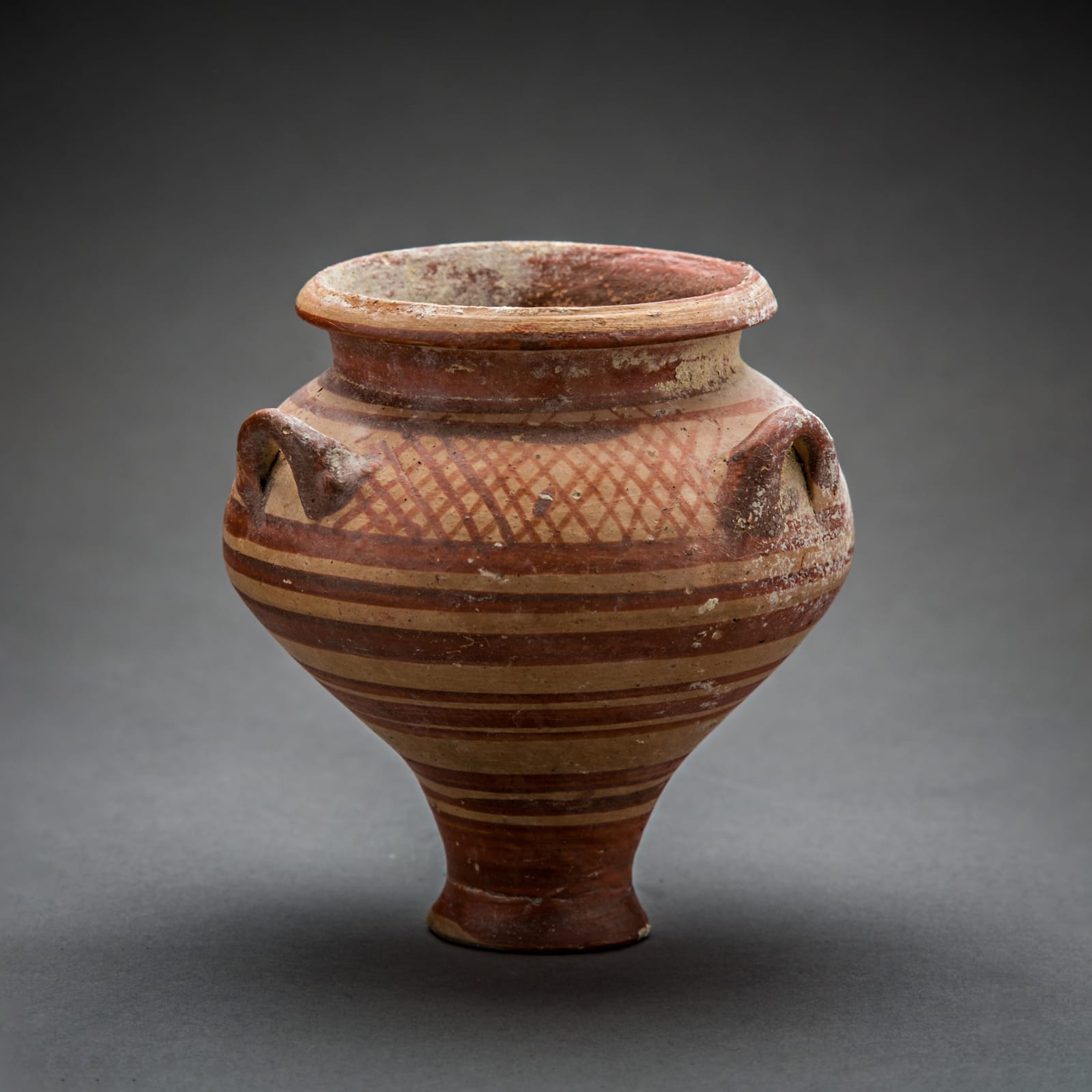Mycenaean Terracotta Three-Handled Pithos, 13 Century BCE - 12th Century BCE
Terracotta
height 11.7 cm
height 4 5/8 in
height 4 5/8 in
X.0288
The Mycenaean culture dominated Greece during the Bronze Age with its power, art, and wealth. According to legend, the city of Mycenae was founded by the hero Perseus on the...
The Mycenaean culture dominated Greece during the Bronze Age with its power, art, and wealth. According to legend, the city of Mycenae was founded by the hero Perseus on the shores of the Peloponniese. A land of valiant warriors, Mycenae is celebrated by Homer as the home of Agamemnon, the heroic king who led the Greeks to victory against Troy. Furthermore, recent archaeological excavations of Mycenaean palaces attest to their wealth, described by Homer as “:Mycenae, rich in gold.” Culturally, the Mycenaeans were heavily indebted to the Minoan civilization of Crete. Noted for their utilitarian pottery, Mycenaean vessels have been excavated throughout the Mediterranean, attesting wide range of their influence on the art and commerce of the ancient world. The script of Linear B was employed by Mycenaean scribes to record their early Greek language. Linear B would replace Linear A, the script of the Minoans, on Crete, revealing that the Mycenaeans would grow to dominate the civilization they grew out of. Although the Mycenaean civilization began to mysteriously decline after the 13th Century B.C., ruins of their constructions, described as Cyclopean because early historians thought only the Cyclops was capable of building with such large boulders, survive today, testifying to the greatness of this ancient culture.
The body of this terracotta pithos tapers into a small circular foot upon which the vessel rests. The short concave next has an everted rim. Three small loop handles are attached to the shoulder. Much of the surface, both inside and out, has been decorated with geometric motifs painted in a dark orange hue. The body features solid bands of orange, while the shoulder is adorned with a reserved band filled with a lattice pattern.
The body of this terracotta pithos tapers into a small circular foot upon which the vessel rests. The short concave next has an everted rim. Three small loop handles are attached to the shoulder. Much of the surface, both inside and out, has been decorated with geometric motifs painted in a dark orange hue. The body features solid bands of orange, while the shoulder is adorned with a reserved band filled with a lattice pattern.
Provenance
THE HEIDI VOLLMOELLER COLLECTION Acquired 1978Christie's Sale 9722, Lot 520



